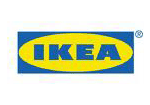MS SQL Maestro online Help
| Prev | Return to chapter overview | Next |
Specifying step options
Specify job step options according to your needs. The detailed description is given below.
Name
The name of the job step.
Type
The field refers to the subsystem used by Microsoft SQL Server Agent service to execute commands.
Database
The name of the database in which a Transact-SQL step is to be executed.
Language
For an ActiveX job step, the field represents the name of the scripting language that the step uses.
Language Name
For an ActiveX job step, the field represents the name of the scripting language that the step uses if Language is selected as Other.
Exit Code
The value returned by a CmdExec subsystem command to indicate that command executed successfully.
On Success Action
Specify the action to be performed if the step succeeds.
On Failure Action
Specify the action to be performed if the step fails.
Retry Attempts
The number of retry attempts to use if the step fails.
Retry Interval (min)
The amount of time between retry attempts (in minutes).
Output File
The name of the file in which the output of this step is saved. This parameter is valid only with commands running on the Transact-SQL or CmdExec subsystems.
Output File Behaviour
Use the option to control output file behavior.
Write To History
Write Transact-SQL job step output to step history (Transact-SQL job steps only).
User Name
The name of the user account to use when executing a TSQL step.
| Prev | Return to chapter overview | Next |





 Download
Download Buy
Buy
